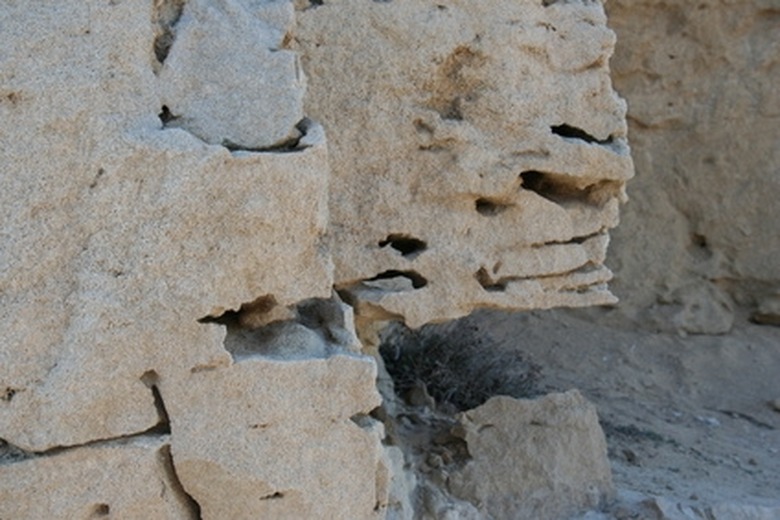How To Identify Sandstone
Sandstone is sand turned to rock. It forms when grains of sand from existing rock or crystals become cemented together over time and involves two basic stages. The first stage is marked by the accumulation of sand that usually settles out of suspension. The second stage involves the compaction of the sand from the weight of additional deposits. You can identify the rock by its distinguishing characteristics.
Step 1
Examine the composition of sandstone. The sand grains are usually in the 0.1 mm to 0.2 mm range and made of quartz. The cement is typically calcium carbonate or silica.
Step 2
Learn the basic properties of sandstone. It typically registers 7 on the Mohr hardness scale and has a density ranging from 2 to 2.65 times that of water. Sandstone is usually opaque with a dull luster although some pieces may be translucent.
Step 3
Observe the colors of sandstone. It is usually tan or yellow from the mixture of the clear quartz and feldspar, which is dark amber. Iron oxide is a common impurity which can cause the sandstone to range from pink to dark red.
Step 4
Look at the characteristic layering of sandstone. Fluid, irregularly-shaped patterns with wavy layers indicate deposits from sand dunes while more regular layering indicates deposits from water.
Step 5
Find sandstone in marine or terrestrial environments. The location of the deposit determines the specific composition and grain size. Note that the term "terrestrial" in this context refers to non-oceanic sources and therefore includes lakes and rivers.
Cite This Article
MLA
Contributor, . "How To Identify Sandstone" sciencing.com, https://www.sciencing.com/identify-sandstone-2155821/. 24 April 2017.
APA
Contributor, . (2017, April 24). How To Identify Sandstone. sciencing.com. Retrieved from https://www.sciencing.com/identify-sandstone-2155821/
Chicago
Contributor, . How To Identify Sandstone last modified March 24, 2022. https://www.sciencing.com/identify-sandstone-2155821/
